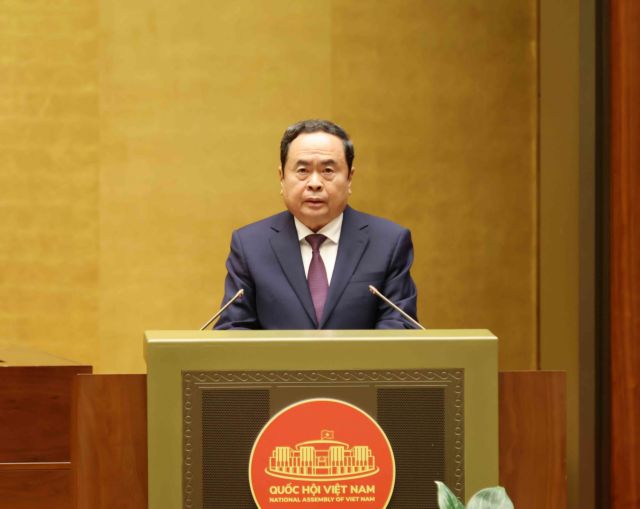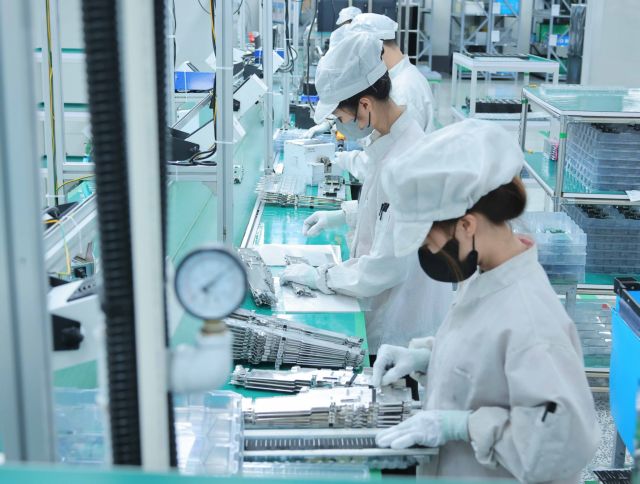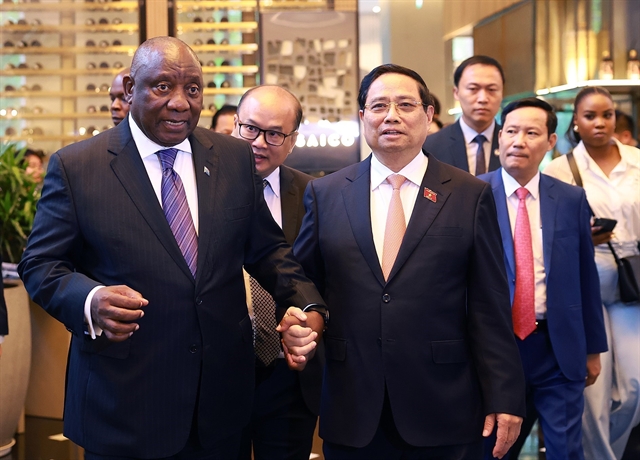 Politics & Law
Politics & Law

 |
| Technicians at work at South Korean-invested Bumjin Electronics Vina Co Ltd in the northern province of Quảng Ninh. — VNA/VNS Photo Hoàng Hiếu |
HÀ NỘI — The Politburo of the Communist Party of Việt Nam has issued a resolution in an effort to make a breakthrough in science, technology, innovation, and national digital transformation development. It has been described as a pivotal step to empower young intellectuals and scientists, enabling them to lead transformative research and innovation initiatives without bureaucratic delays.
Since its issuance on December 22, 2024, scientists have actively shared their insights on the resolution’s ambitious goals and transformative agenda.
Signed by Party General Secretary Tô Lâm, Resolution 57 outlines Việt Nam’s ambitious goals to rank among the top three in Southeast Asia and the top 50 globally in digital competitiveness and the e-government development index. It also aims to place Việt Nam among the top three in Southeast Asia for AI research and development, positioning the country as a hub for specific digital technology industries where it holds a competitive edge.
The resolution sets a target by 2030 of having 12 scientific research and technology development personnel per 10,000 people, along with 40 to 50 scientific and technological organisations ranked regionally and globally.
Crucially, it underscores the role of scientists, introducing measures to dismantle institutional barriers and implement incentives to unlock their creative potential.
Scientists have particularly highlighted the target of 3 per cent annual expenditure on science, technology, innovation, and digital transformation by 2030, with the allocation for research and development (R&D) increasing from 0.4 per cent to 2 per cent of GDP. This funding is expected to fuel scientists’ passion for research and propel the nation into a new era.
Removing long-standing barriers
Regulations in recent years stipulated that spending on science and technology must account for at least 2 per cent of the total budget, gradually increasing to meet development needs. However, actual spending has remained low.
According to a 2023 Ministry of Finance report, science and technology expenditures accounted for just 0.82 per cent of the total state budget, with 0.23 per cent allocated for investments and 0.59 per cent for recurrent expenditures.
Minister of Planning and Investment Nguyễn Chí Dũng said that many ministries, sectors, and localities have failed to prioritise science and technology development or present well-structured proposals to justify funding allocations. Between 2016 and 2021, the Ministry of Science and Technology allocated only VNĐ519 billion (US$20.4 million) from a total budget of VNĐ3.77 trillion ($148.4 million) for science and technology research tasks.
Former Minister of Science and Technology Nguyễn Quân called Resolution 57 a significant breakthrough, mandating that by 2030, spending on R&D must reach 2 per cent of GDP, with over 60 per cent of funding sourced from societal contributions. The resolution also requires at least 3 per cent of the annual state budget to be allocated to this sector.
In the past, state budget spending on science and technology consistently fell below 1 per cent of total expenditures. Resolution 57’s targets will require the Ministry of Finance to rebalance allocations, providing a stronger foundation for this critical sector’s growth.
Quân emphasised the need for better mechanisms and policies to support and retain leading scientists, both at and from abroad. He highlighted the importance of providing conducive working conditions, including benefits such as visas, housing, and travel support for scientists and their families.
Quân urged a review of related laws, including the Law on Science and Technology, the Law on State Budget, and the Law on Public Employees, to introduce groundbreaking policies that facilitate research and innovation.
Driving breakthroughs
Phạm Huy Hiệu, lecturer in Engineering and Computer Science at VinUniversity and head of Research division at the Việt Nam Network for Innovation in Universities and Colleges, commended Resolution 57 for its mechanisms to attract overseas Vietnamese and skilled foreign professionals to work and live in Việt Nam.
“This approach affirms the role and position of scientists in society while igniting the aspirations of intellectuals at home and abroad,” he said.
.jpg) |
| Party General Secretary Tô Lâm and intellectuals, scientists at an event in Hà Nội in December 2024. VNA/VNS Photo |
Bùi Hải Hưng, director of VinAI Research and formerly a senior research scientist at Google DeepMind, stressed the importance of high-quality human resource training in advancing science and technology. Hưng noted Việt Nam’s advantage lies in its abundant human resources, well-versed in STEAM education and quick to adapt.
He proposed that training efforts should begin at the secondary education level, supported by increased investment to enhance educational quality. This includes developing top-tier universities in Southeast Asia to ensure a high-caliber workforce.
Tạ Sơn Tùng, founder and chairman of Rikkeisoft, praised the government’s commitment to innovation, science, technology, and digital transformation. He highlighted that investments in human resource training and applications of AI, the Internet of Things (IoT), and robotics will boost productivity and position Việt Nam as a rising star in global IT.
Tùng said that while Vietnamese engineers excel at solving complex problems, improving foreign language proficiency and mastering AI tools will be essential to compete globally.
“With clear objectives, innovative approaches, and the determination outlined in Resolution 57, Việt Nam is well-positioned to achieve a breakthrough in science, technology, and digital transformation,” he said. VNS




